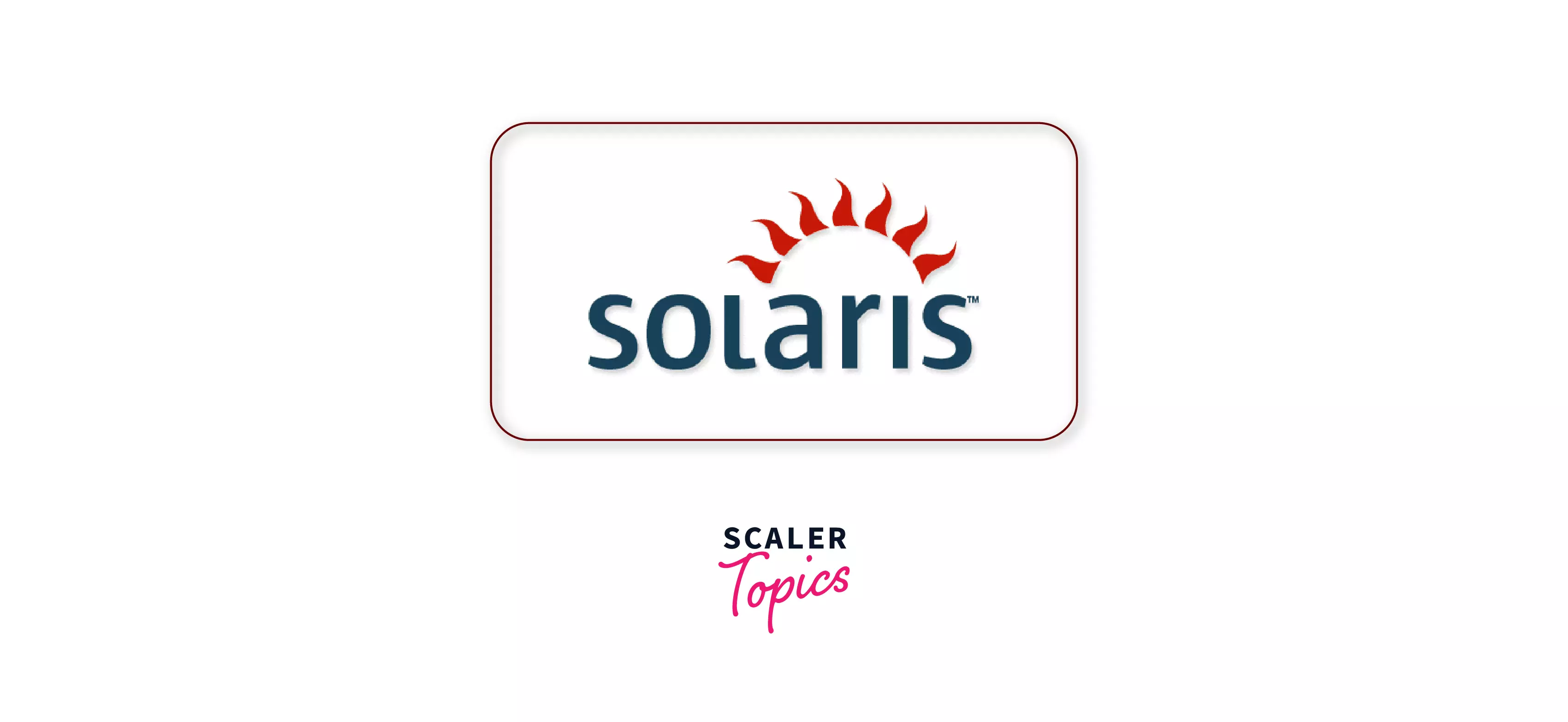Solaris Operating System
Overview
Solaris is a Unix-like operating system developed by Sun Microsystems, which Oracle later acquired. Solaris was the successor to the company's previous SunOS in 1993. Solaris gained popularity for its scalability and for having many new features. Solaris supports SPARC and x86-64 workstations and servers from Oracle and other vendors.
After acquiring Sun Microsystems, Oracle discontinued the OpenSolaris distribution and development. Oracle stopped providing public updates to the source code of the Solaris kernel, in August 2010, thus turning Solaris 11 back into a proprietary closed-source operating system.
What is the Solaris Operating System?
Solaris is the Unix-like operating system developed by Sun Microsystems rooted in the BSD operating system family. The first release of SunOs dates back to 1982. Since Sun Microsystems created the platform-independent programming language Java and Java runtime environment (JRE), Solaris systems come with a Java virtual machine (JVM) and the Java Development Kit (JDK) pre-installed.
Sun provided the following three extensions for its Solaris OS:
- The Easy Access Server, was designed for running in networks that also have Windows NT systems.
- The Enterprise Server, was designed primarily for business-oriented environments. It included support for clustering.
- The Internet Service Provider server.

Structure of the Solaris Operating System
The internal structure of the Solaris operating system is similar to the building of a city; from its core which keeps the whole façade standing, to the exterior with which we interact.
The kernel is the root of the Solaris OS and represents the core of Solaris. On the other hand, the exterior part is denoted by the shell, which is an interpreter of instructions. The shell provides us with a user interface so we can have access to the operating system.
Solaris 2.5.1 was the only version that supported the Power PC platform (PC architecture of the type RISC). However this version ended up being canceled soon after its release.
Applications of Solaris Operating System
-
Enterprise Computing: Solaris is widely used in enterprise computing, particularly in large data centers and high-performance computing environments. Its scalability, security features, and ability to handle heavy workloads make it an ideal choice for mission-critical applications.
-
Cloud Computing: Solaris is also used in cloud computing environments as a platform for running virtual machines and hosting cloud-based applications. It provides advanced virtualization technologies that allow multiple operating systems and applications to run on a single physical server.
-
Networking: Solaris is widely used in networking environments for its advanced networking features, such as support for IPsec, IPv6, and multicast routing. It also provides a number of tools for network management and monitoring.
-
Storage: Solaris includes several features that make it a popular choice for storage environments. These include support for file systems like ZFS, which provide advanced data protection and management capabilities, as well as the ability to manage large storage arrays.
-
High-Performance Computing: Solaris is used in many high-performance computing environments, such as scientific research and modeling. Its ability to handle large data sets and complex computations makes it an ideal choice for these applications.
-
Financial Services: Solaris is used in many financial services applications, such as trading systems and risk management platforms. Its scalability, reliability, and security features make it an ideal platform for these applications.
-
Telecommunications: Solaris is used in many telecommunications applications, such as mobile networks and call centers. Its ability to handle high volumes of data and support for advanced networking features make it an ideal platform for these applications.
Features of the Solaris Operating System
Following are some prominent characteristics of the Solaris operating systems:
- The main founders of the Solaris operating system are Andreas von Bechtolsheim, Vinod Khosla, Bill Joy, and Scott McNealy.
- Solaris Operating System itself is a proprietary and closed-source Unix-based operating system.
- OpenSolaris is a free and open-source operating system developed from the proprietary closed-source version of the Solaris operating.
- Other than scalability and interoperability, portability is one of the greatest benefits that the Solaris OS possesses.
- Solaris has an application binary interface (ABI), which executes the application software on any operating system with an identical microprocessor architecture. This leads to decreased costs of software development, the faster landing of products in markets, reduced costs of conversion, etc.
- Solaris is highly scalable. It’s capable of running on multiple devices, independent of its pertinence to a big environment. This ensures that if the user base grows or needs a more powerful system Solaris can handle the situation well.
Conclusion
- Solaris is a Unix-like operating system developed by Sun Microsystems, which Oracle later acquired. Solaris was the successor to the company's previous SunOS in 1993.
- The main founders of the Solaris operating system are Andreas von Bechtolsheim, Vinod Khosla, Bill Joy, and Scott McNealy.
- Sun provided the following three extensions for its Solaris operating system, the Easy Access Server, the Enterprise Server, and the Internet Service Provider.
- Solaris 2.5.1 was the only version that supported the Power PC platform (PC architecture of the type RISC).
- Other than scalability and interoperability, portability is one of the greatest benefits that the Solaris operating system possesses.
